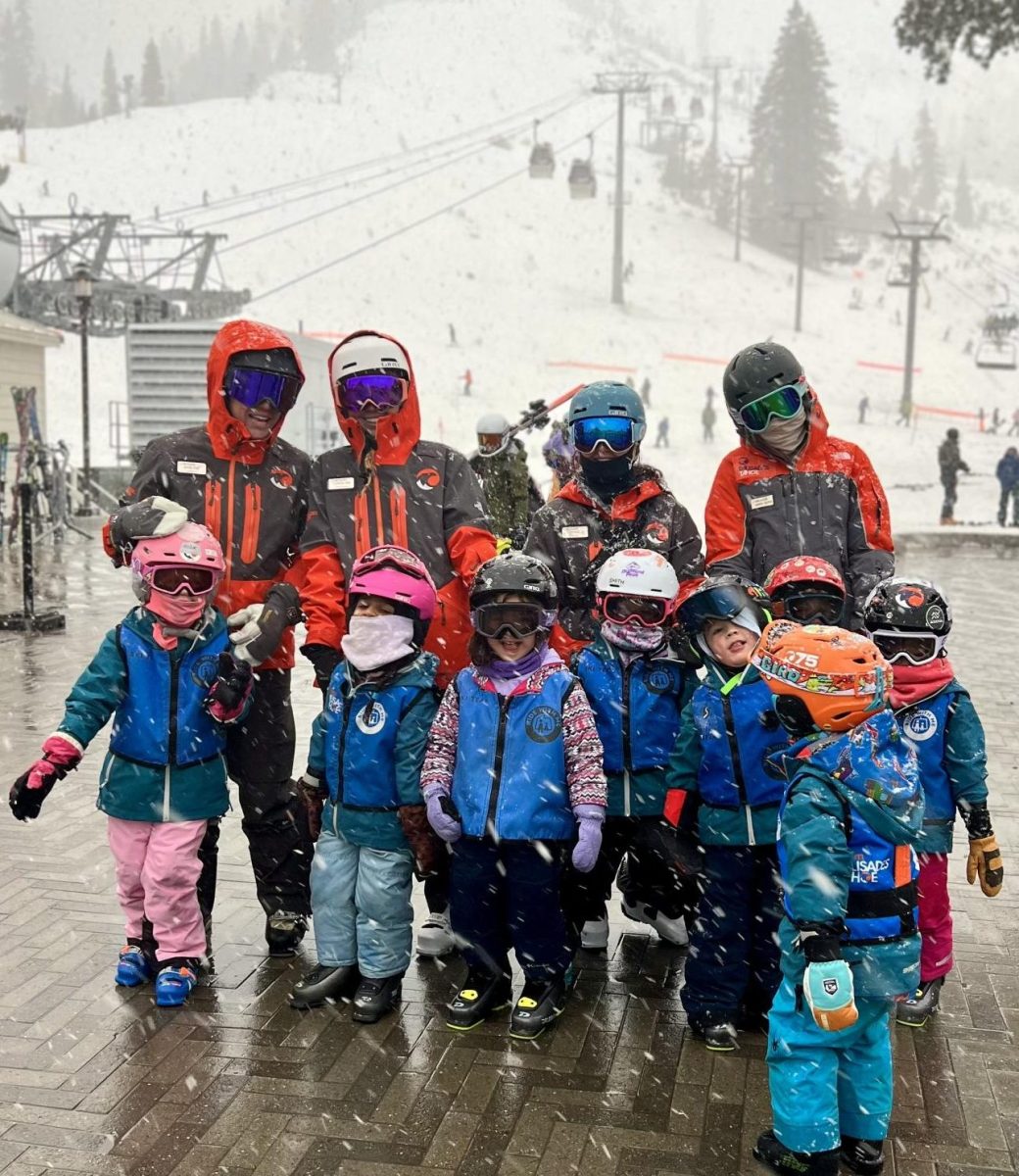
Picture Vincent Van Gogh’s “The Starry Night” in your head: the warm yellow swirls and curls that contrast with the cool navy blues and whites, the deep haunting black buildings and specks of green marking up the mountain side. Now imagine it again, except this time made out of a material that we usually throw in the recycling.
Meticulously-built cardboard models of everyday objects are junior Richard Seidel’s specialty. From airplanes and trains to the humble candy bar, Seidel builds it all. After watching a video in seventh grade of a YouTuber building things out of cardboard, he was inspired to do the same, building his first cardboard model: a hamburger. He then would bring them into class to show his teacher his creations.
“I got into it because it’s unique. [Cardboard] is cheap, I have a lot of it, it’s easy to work with, and sticks together easily. You don’t really hear about anyone working with that material. People usually work with clay and wood,” Seidel said.
Richard Esteb, Seidel’s engineering teacher, said in a recent email interview that Seidel has to cut the cardboard in a certain way to accommodate the bends of what he wants to build. In Esteb’s Intro to Engineering Design class, one of his assigned projects is to build a chair out of cardboard, so it’s not uncommon for him to see it as a building material.
“[Cardboard] has properties that are not universal in each of the three axes. It is strong and stiff in two directions, and can bend usually in one,” Esteb said.
In the future, Seidel said he wants to become either an engineer or an architect. By creating these mini projects, he is getting accustomed to the field.
“It is a pleasure when I see a student follow their passion, regardless in what area it is. [Seidel] seems to get closer to his inner voice and passions, now that he is engaged in these projects,” Esteb said. “It doesn’t matter what topic or area that the joy that one feels in their heart, it is the act of following it that will make a big difference in their life.”
Building the models also provides a way for Seidel to combat the stress of taking academically demanding classes.
“I’m always stressed out, so when I make something it’s lots of fun and I can get in my zone and just work. I think to myself, ‘Yes, homework is important,’ but at the same time if I don’t build something, there’s just an unrest in myself,” Seidel said.
Although the length of the project can vary depending on the scale, Seidel sets up time around his homework schedule to create his projects. Each one, according to Seidel, can take from four to 16 hours.
“It includes blue printing, or waiting to design something and just thinking about it, but all my free time is just thinking about what I’m gonna make,” Seidel said. “I print out diagrams or I design a diagram of my own on my computer and I go from there.”
Other times, Seidel will take a picture of what he wants to build, draw how he thinks it’s supposed to look and start making it from there.
Despite being Seidel’s way of relaxing, he doesn’t just make models solely for himself. He has also made them for his teachers and friends.
“I’ve made a tank for a friend that likes World War II stuff. I’ve made political figures for my friends,” Seidel said. “The reason that I made Van Gogh’s ‘The Starry Night’ was because my precalc teacher had a lot of pictures of Van Gogh’s artwork.”
Seidel amazes not only teachers with his work but his classmates. Junior Aidan Chrisley, a friend of Seidel, said he admires his ability to create things that the average person isn’t able to make.
“[Seidel] is really dedicated to his work and it shows. I’ve seen some of his projects midway through and it’s breathtaking,” Chrisley said.
Seidel creates a new model each week. Although he’s thought of making a YouTube channel or Instagram dedicated to his models, he hasn’t created any social media platforms yet.
“Eventually in the future, I might be doing that, but usually I just take pictures and send them to my friends,” Seidel said.
Seidel also receives ample support from Esteb on all of his model building endeavors.
“I have seen Richard blossom with his creations. I have given him support and encouragement to make these items. I’m always excited to see what he brings in on Monday after a weekend of work,” said Esteb. “Richard is an amazing creative talent and has a wonderful future ahead.”







